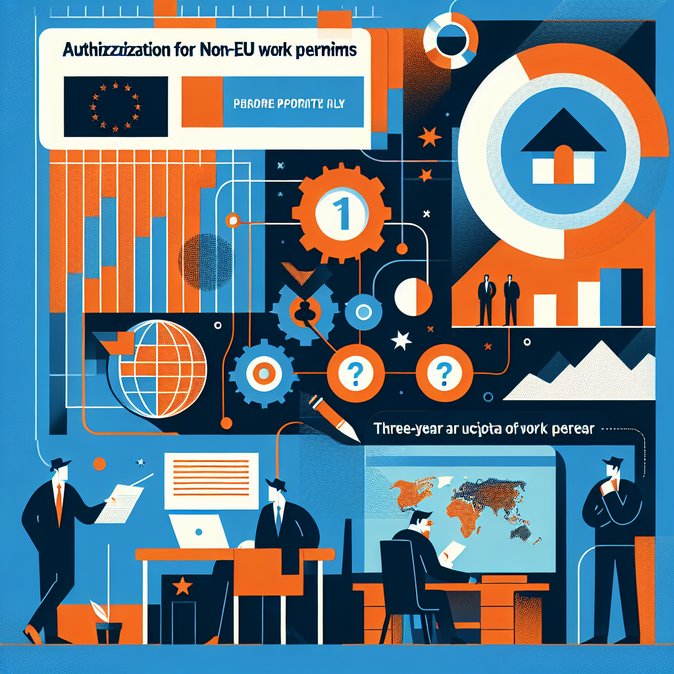
A circular distributed on 24 October 2025 by Confimi Apindustria Mantova confirms publication of the long-awaited D.P.C.M. of 2 October 2025, which programmes legal labour immigration for the three-year period 2026-2028. The decree authorises 497,550 entries of non-EU citizens, split almost equally across the three years (164,850 in 2026, 165,850 in 2027 and 166,850 in 2028) and broken down by sector and contract type.
Key technical points for mobility managers:
• Staggered ‘click days’. Agricultural seasonal quotas open 12 January 2026; tourism seasonal quotas 9 February; and non-seasonal quotas 16 and 18 February depending on whether the worker’s home country has a migration accord with Italy.
• Employer cap. Private employers may submit no more than three work-permit requests per year, a limit introduced by the March 2025 immigration law to curb speculative applications.
• Fast-track channel. A pilot allowing 10,000 off-quota permits a year for caregivers to over-80s and persons with disabilities—introduced in 2024—has been extended to 2028.
• Pre-compilation window. The inter-ministerial circular 8047/2025 opens the ALI portal from 23 October to 7 December 2025 so companies can preload applications and documentation, a step strongly recommended to avoid system slow-downs on the click days.
For global businesses the decree offers medium-term visibility. Unlike previous single-year quota decrees, the three-year horizon lets HR teams plan multi-year staffing levels and align Italian assignments with project timelines. However, the tight employer cap means large corporations will need to rely on accredited industry associations—which are exempt from the cap—or on intra-company transfers (outside quota) to meet bigger head-count needs.
Analysts also note that the 497,550 figure, while ambitious, still falls short of the 10 million immigrants economists say Italy needs by 2050 to stabilise its workforce. Pressure for further quota increases, especially in logistics and construction, is therefore likely.
Key technical points for mobility managers:
• Staggered ‘click days’. Agricultural seasonal quotas open 12 January 2026; tourism seasonal quotas 9 February; and non-seasonal quotas 16 and 18 February depending on whether the worker’s home country has a migration accord with Italy.
• Employer cap. Private employers may submit no more than three work-permit requests per year, a limit introduced by the March 2025 immigration law to curb speculative applications.
• Fast-track channel. A pilot allowing 10,000 off-quota permits a year for caregivers to over-80s and persons with disabilities—introduced in 2024—has been extended to 2028.
• Pre-compilation window. The inter-ministerial circular 8047/2025 opens the ALI portal from 23 October to 7 December 2025 so companies can preload applications and documentation, a step strongly recommended to avoid system slow-downs on the click days.
For global businesses the decree offers medium-term visibility. Unlike previous single-year quota decrees, the three-year horizon lets HR teams plan multi-year staffing levels and align Italian assignments with project timelines. However, the tight employer cap means large corporations will need to rely on accredited industry associations—which are exempt from the cap—or on intra-company transfers (outside quota) to meet bigger head-count needs.
Analysts also note that the 497,550 figure, while ambitious, still falls short of the 10 million immigrants economists say Italy needs by 2050 to stabilise its workforce. Pressure for further quota increases, especially in logistics and construction, is therefore likely.






